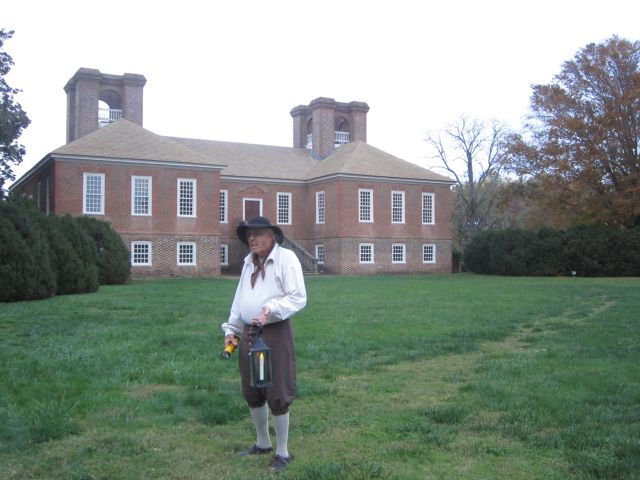Ghosts
With today being Halloween, I thought I would share some ghost stories about some of the places we have talked about in the blog.
So gather around for some stories I found from the Central Rappahannock Regional Library in Fredericksburg.
If you dare….
CHATHAM
(From our blog: This was the location of the dual between cousins – Posting Family Feud – published in June)
Chatham was built in 1771 by William Fitzhugh and named after his classmate, Sir William Pitt, Earl of Chatham. The Georgian mansion became noted for its owner’s hospitality during colonial times, but played an even more significant role during the Civil War when it served as a Union headquarters. Walt Whitman and Clara Barton nursed the Union wounded there.
High on a bluff overlooking the Rappahannock River and the city of Fredericksburg stands Chatham. The mansion has hosted many important people, including George Washington, Abraham Lincoln, and the Marquis de Lafayette. The spectral apparition haunting the estate is none of these illustrious figures, however. The ghost of Chatham is an English girl who returns in memory of a lost love. Dressed all in white, she walks upon her favorite path at the estate in fulfillment of a deathbed vow.
She was brought to Chatham by her father, who wished to sever the young woman’s romance with an English drysalter. Despite the enjoyable social life of the Virginia estate, the girl pined for her lover. The young drysalter followed her to America, however, and the lovers secretly planned their elopement. Finally the chosen night arrived. The young man silently moored a boat on the Rappahannock and cautiously placed a ladder against his love’s window. But instead of climbing down into the arms of her beloved, the young woman found herself enveloped by General George Washington. A guest at Chatham at the time, the general was informed of the elopement plans by a servant.
Washington had the drysalter arrested on that fateful night, and returned the girl to her father’s custody. Taken back to England by her father, the girl ultimately married someone of a more suitable social standing. But she never forgot her true love or the events at Chatham, and vowed to walk her favorite path on the anniversary of her death.
Several visitors and residents of Chatham have watched the English woman as she makes her anniversary journey on the path now known as Ghost Walk. Always seen between noon and midnight, the lady in white has visited Chatham once every seven years since her death on June 21, 1790.
KENMORE
(From our blog: This is one of the Historic Homes we have visited – Posting Kenmore Plantation – published in September)
Kenmore was built in 1752 by Col. Fielding Lewis for his bride, Betty Washington Lewis, only sister of George Washington. One of the most successful planters in Fredericksburg, Lewis lost part of his fortune when Virginia’s government failed to reimburse him for financing the Fredericksburg Arms Manufactory during the Revolutionary War. Lewis died in 1782 and the estate was eventually sold out of the family. The Georgian mansion and gardens are now restored to their colonial splendor, and one of its rooms is considered to be among “The 100 Most Beautiful Rooms in America”.
Some people say the ghost of Fielding Lewis is haunted by his financial problems. Other theorize he returns to Kenmore simply because he cannot bear to leave his beautiful plantation – even in death.
No one can be sure why Col. Lewis haunts his 18th century estate, but that he often returns cannot be denied. From the sound of heavy footsteps echoing through empty halls to fireplace andirons mysteriously crashing to the floor, Lewis has made his ghostly presence known to many visitors to the mansion. And Kenmore’s former master has been seen as well as heard.
His apparition usually appears in an upstairs bedchamber where Lewis attended to business matters. There the ghostly Lewis, attired in Revolutionary clothes, has been seen standing and reading a document he holds in his hands. The Colonel has also been seen in the same room, busily studying his accounts, with a look of deep concern in his eyes.
A man who sacrificed his fortune to the cause of American independence, Col. Fielding Lewis may still be troubled by his financial difficulties, as he wanders the rooms of his beloved estate.
MANNSFIELD
(From our blog: This is the plantation that William Bernard took his new wife and children to after the death of Fannie Hipkins-Bernard- Posting A Father’s Love – published in June)
This 18th century stone mansion survived more than a century o f American change and turmoil until it was burned accidentally by Confederate forces during the Civil War. It was built in 1749 by Mann Page, a delegate to the House of Burgesses. The Mannsfield property adjoins the Fredericksburg Country Club, which is not open to the public.
“The South Will Rise Again,” is a familiar saying. But for the Confederate soldiers who haunt Mannsfield, the South never died. During the Civil War, Mannsfield was occupied by both Union and Confederate forces. The estate served as hospital and headquarters for both armies at different times. But it is the ghostly men in gray who return to haunt Mannsfield. Several nearby residents have sighted the apparitions of the Confederate soldiers as they congregate beneath the estate’s large trees.
The greatest number of ghostly visits occurred, however, while a clairvoyant woman was living in a nearby home. Regularly, the woman saw the uniformed men as they stood guard, tended to their horses, or cared for wounded soldiers. Perhaps these spectral Confederates who still haunt Mannsfield are awaiting the resurrection of the South.
TAVERN
(From our blog: This is the tavern across the street from the Schooler House B&B – Posting Weekend at the Plantation – published in August)
The Rising Sun Tavern recreates tavern life of the 18th century, when a tavern was the center of colonial life. Built in 1760 by George Washington’s brother, Charles, as a home, the building began its role of a tavern in 1792. It served as the city’s post office and stage coach stop. Originally known as the Eagle Tavern among the most patriotic symbols of early America, the tavern continued to operate under several keepers until 1827, when its liquor license was revoked.
Although its days of challenging and lively political discussions and games of cards and chess over pints of ale are past, the Rising Sun Tavern is still a lively historic attraction and its ghostly inhabitant maintains the spirit of cheer and mischief that once thrived at the tavern. For instance, one tavern guide found that the ghost delighted in unplugging the lights in an upstairs room. Tired of having to replug the cords, she finally cried, “Come on now, stop it!” As she turned to leave the room, the guide suddenly felt herself slipping to the floor as the tavern ghost pulled the rug out from under her. The lights remained plugged in the rest of the day, however.
Another hostess was coming down the stairs early one morning when she felt something tugging at the hem of her dress. She looked to see if her colonial gown was caught on something, but found nothing amiss. As she tried to proceed down the steps, however, she felt herself held tightly in place. Long a believer that the tavern’s ghost was its last owner, John Frazier, she exclaimed, “All right, John, let go!” Immediately she felt herself freed as the ghost let go of her dress hem.
Evidently the ghost is a playful apparition, for he delights in pulling the mob caps from the tavern hostesses’ heads. He also moves objects, such as candles, from their regular storage places. The tavern ghost may also be filled with the Christmas spirit since he delights in pulling his pranks during the holiday season.
Stratford Hall
This is the family plantation of the Lee Family and Robert E. Lee. Last weekend I attended their Historic Haunts event on Saturday. It was open to people of all ages. With spooky games for the kids, food and drink and a ghost tour of the Great House, fun was to be had by all.
I was on the first ghost tour at twilight. Our tour guide was a kind gentleman dressed in colonial wear. He guided us around the grounds of the Great House and through it with our flashlights as the only source of light. Along the way we met up with other staff dressed in either colonial wear or costumes that wouldn’t be too scary for the young ones.
The stories we heard told of ghostly appearances of men, women and children that called this grand plantation home. After a walk through the Great House and boxwood garden, our tour ended at the family cemetery vault, which no longer has remains in it. It was a great time hearing the stories and seeing the plantation as the sun disappeared.
Once I returned to Belle Grove Plantation, I had a surprise waiting for me on my cell phone. During the first story, just before entering the house, I decided to video tape the guide telling the story of the ghostly visitors of Stratford Hall. Brett had not been able to attend and I wanted him to see what I got to see.
When I played the video on my phone, the tape started out fine. It was nice and clear, in full color. As the story moved along, the color of the video seemed to go to a gray color. It started out light at first. Then all of a sudden it when completely gray. But what was surprising was that the video started jumping around as if something was cause some kind of electrical disturbance. As suddenly as it came, it left.
So what could it have been?
Did one of the ghostly visitors walk in front of my cell phone as I taped the guide?
Who knows. But it does make you wonder.
We are just days away from the Silent Auction deadline!
Get your bids in soon!
Deadline is Friday, November 2nd at 11:59pm Eastern
Get your piece of Virginia History and help us preserve the history at Belle Grove Plantation!






















